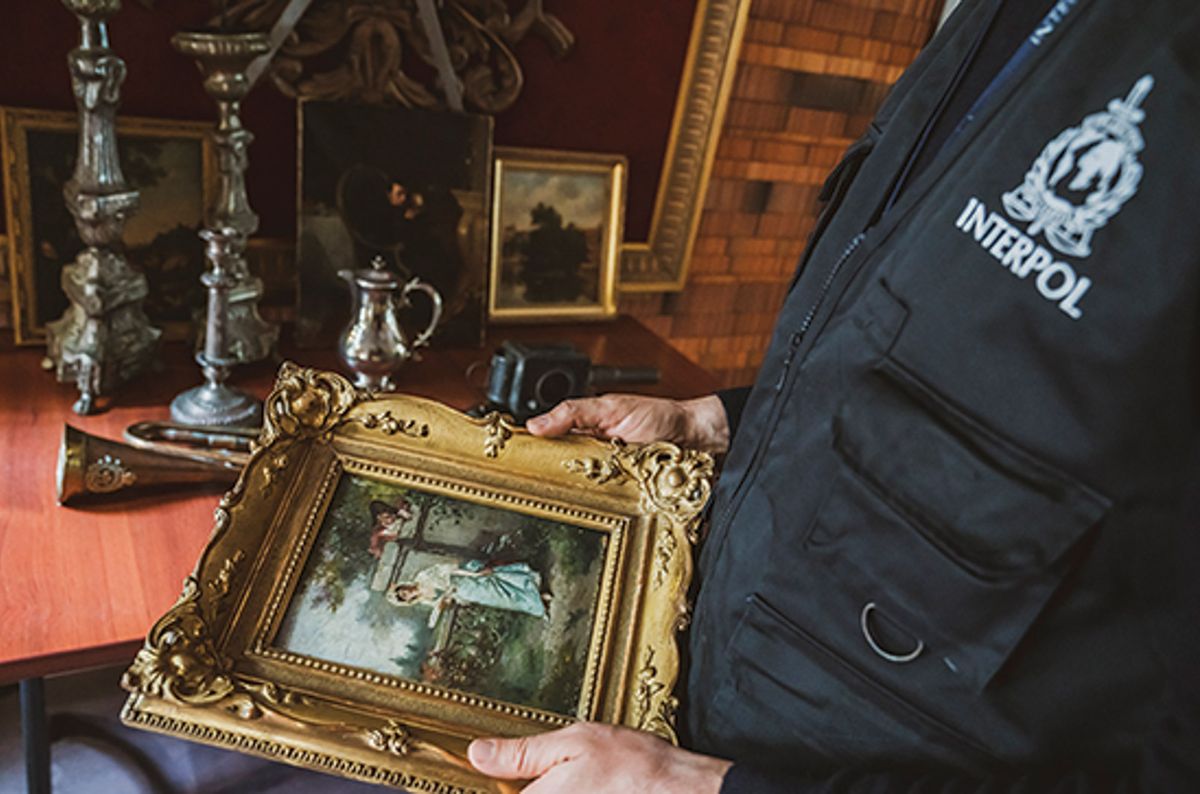Interpol has launched a new, free-to-download app to help law enforcers identify stolen art. It has already scored successes during pilot tests by police in Spain and Italy.
The new app, called ID-Art, allows users to check art against 52,000 works registered as stolen on Interpol’s database. It is also envisaged as a tool for collectors and museums, allowing them to create inventories of their collections. These records can be submitted to Interpol in case of theft and will greatly increase their chances of recovering stolen works.
“It’s a concrete tool for police and customs—and for museums and private individuals,” says Corrado Catesi, the head of Interpol’s Works of Art Unit. “It is not the panacea, but it can really help.”
Spanish police said last month in a press statement that they used ID-Art to identify three Roman gold coins that had been stolen in Switzerland in 2012. Acting on a tip-off from a London numismatist, they caught and arrested two people in Barcelona as they were trying to sell one of the coins, which together are worth around €200,000.
ID-Art is available for free from the Google Play Store and the Apple App Store. Catesi says it has been downloaded thousands of times by users around the world since its launch on 6 May. Checking potential purchases against the app allows collectors to conduct “the minimum of due diligence”, Catesi says. Users can search for an item on the database either by uploading a photo or by entering search criteria.
The Interpol database, while extensive, is not a comprehensive listing of all looted art. An app with a similar purpose to ID-Art is in development at the Fraunhofer Institute for Computer Graphics Research in Darmstadt, Germany. Known as KIKU, it uses machine learning—a subset of artificial intelligence—to identify an object from photographs and to help to ascertain whether it may have been looted or illegally excavated from an archaeological site.
Pictures taken by users are sent to KIKU’s deep learning network, which searches for similar artefacts and relevant information about them from archaeologists—such as place of origin and date. This provides an initial basis for law enforcers to judge whether the item might be looted. In a second stage, the app compares the photographed object with police databases of stolen cultural property, including the Interpol database, and sounds an alarm if there is a match.
In addition to the Roman coins found in Spain, the Carabinieri’s unit for the protection of cultural heritage also identified two stolen statues using ID-Art, leading to legal proceedings, Interpol says.


